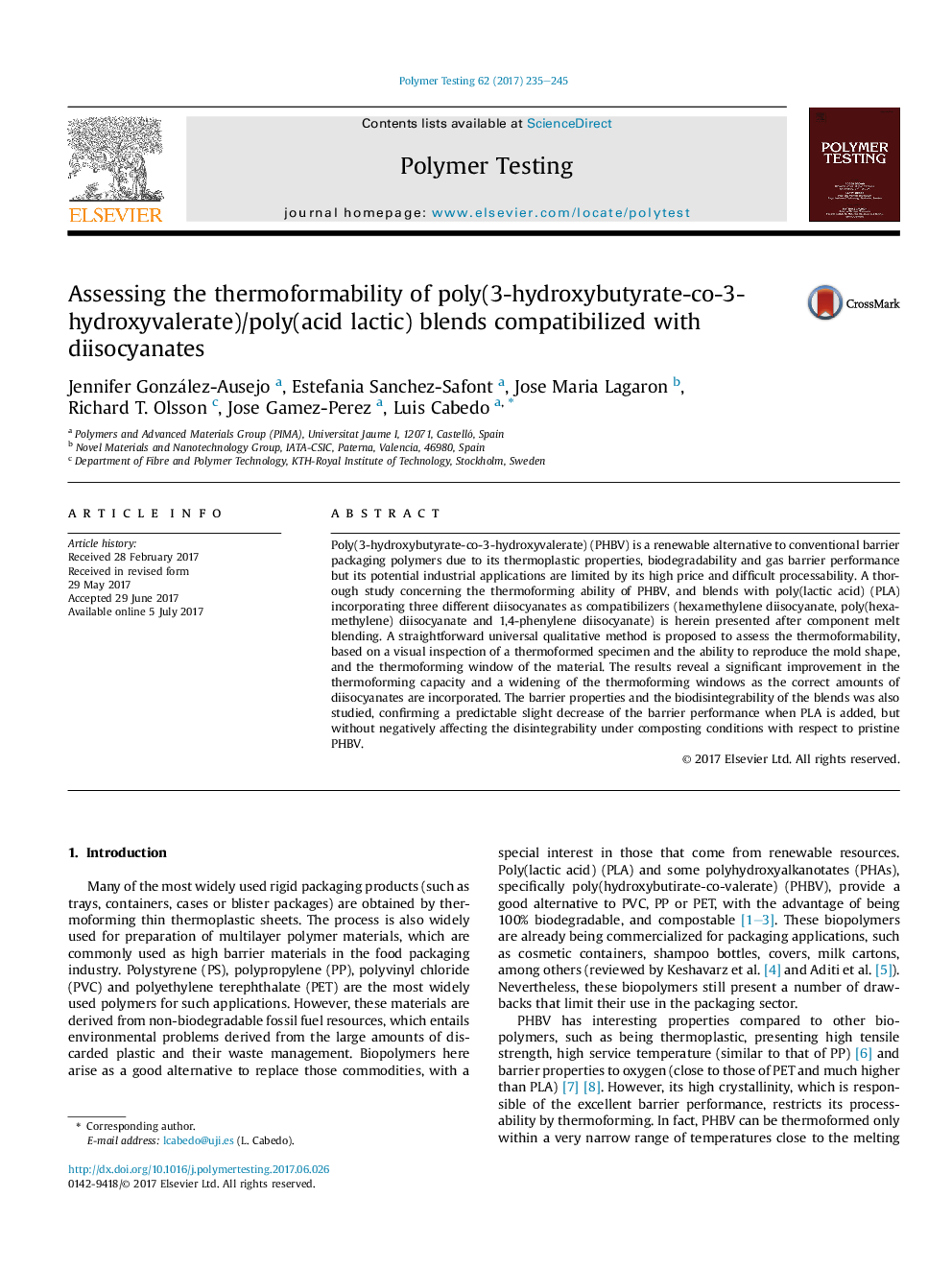| Article ID | Journal | Published Year | Pages | File Type |
|---|---|---|---|---|
| 5205386 | Polymer Testing | 2017 | 11 Pages |
Poly(3-hydroxybutyrate-co-3-hydroxyvalerate) (PHBV) is a renewable alternative to conventional barrier packaging polymers due to its thermoplastic properties, biodegradability and gas barrier performance but its potential industrial applications are limited by its high price and difficult processability. A thorough study concerning the thermoforming ability of PHBV, and blends with poly(lactic acid) (PLA) incorporating three different diisocyanates as compatibilizers (hexamethylene diisocyanate, poly(hexamethylene) diisocyanate and 1,4-phenylene diisocyanate) is herein presented after component melt blending. A straightforward universal qualitative method is proposed to assess the thermoformability, based on a visual inspection of a thermoformed specimen and the ability to reproduce the mold shape, and the thermoforming window of the material. The results reveal a significant improvement in the thermoforming capacity and a widening of the thermoforming windows as the correct amounts of diisocyanates are incorporated. The barrier properties and the biodisintegrability of the blends was also studied, confirming a predictable slight decrease of the barrier performance when PLA is added, but without negatively affecting the disintegrability under composting conditions with respect to pristine PHBV.
Graphical abstractDownload high-res image (310KB)Download full-size image
